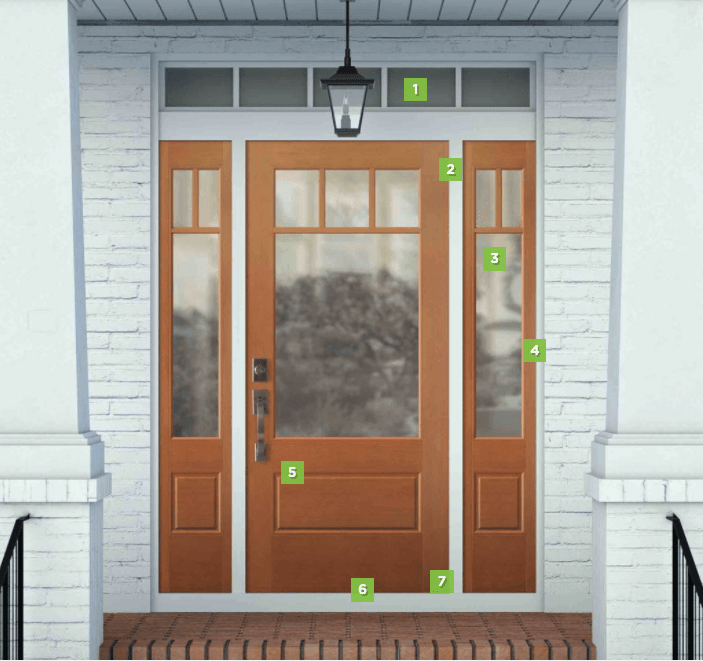
1. Transom
A transom refers to the window that sits above the door. They are typically a half-circle, but can also be elliptical, rectangular, or come in a full circle.
2. Mull Post
This is the structural post between the sideline (see next definition) and the door. Doors without sidelines do not have mull posts, they only have jambs. A mull post is essentially a “double-sided” jamb. This is used to help cover the seal between a door and the sidelines to give it a “cleaner” look and appearance.
3. Sidelite
A fixed narrow panel, installed next to a door panel, for decorative purposes. They almost always contain glass lights. Sidelines are normally designed to occupy a position adjacent to exterior doors, either in a common frame with the door or in a separate frame.
4. Brickmold
Brickmold is used as casing/border around exterior doors. It is most commonly used in pre-hung units and will often be called trim or casing. Brickmold can be made of different materials: finger-joint pine, composite, vinyl, or stain grain wood. The key differences between materials are the cost and the durability (more durable = more expensive).
5. Door Slab
The door slab is the largest and most important component, and probably the most well-known. It, however, is not the only one that matters. The performance of a door is ultimately tied to the components that surround it. The best door slab in the world will not perform with loose hinges, rotten jambs, or a leaky sill.
6. Sill
A horizontal beam below the door that supports the frame; a flat metal bar screwed to the floor prevents the door from swinging through and helps keep the elements out. Sills are designed with a slope/ramp that goes from the inside of the home sloping down to the outside. It always sends water away from the home/building.
7. Mull Boot
A plastic component that covers the end of the mull post (where it meets the sill); mull boots protect the mull post from water damage that leads to rotting. Not a required part of the door frame, but a good investment for wet climates.
